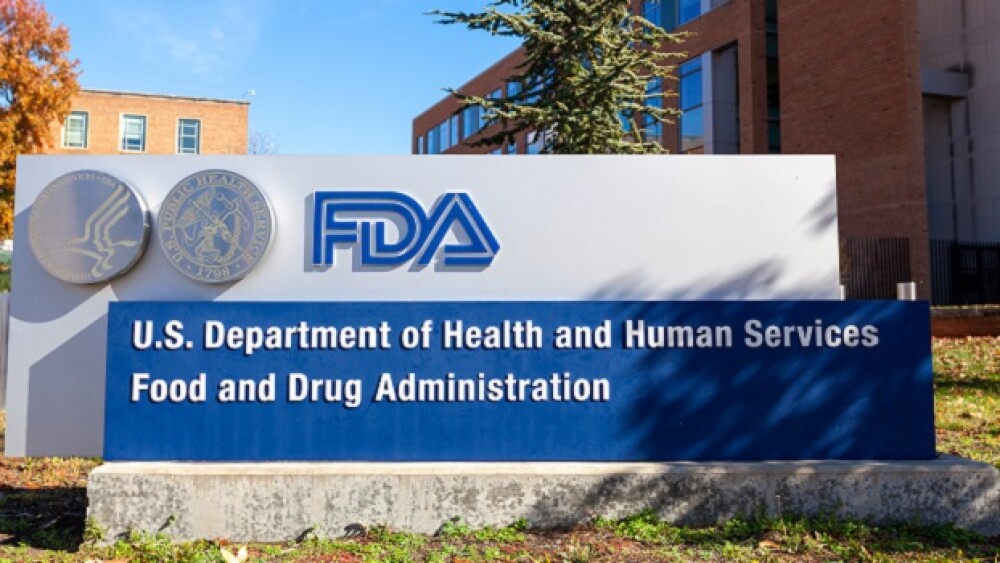“As a leader in transplant medicine for 30 years, we have worked to develop the industry’s broadest portfolio of transplant medications to meet varied needs of individual patients,” said Tim Wright, Global Head of Development, Novartis Pharma. “This new indication for Certican reinforces our continued commitment to transplantation and further expands availability of this important treatment option to physicians and transplant patients throughout Europe.”
The approval was based on the largest liver transplant study to date, which showed that Certican plus reduced tacrolimus led to similar efficacy and superior renal function versus tacrolimus alone at 12 months1,2. New 24-month data from this pivotal study will be presented at the 63rd Annual Meeting of the American Association for the Study of Liver Diseases (AASLD) in Boston, MA, USA, in November 20125.
“In clinical practice, our top priority is to prevent organ rejection post-transplant and to optimize renal outcomes for patients, with the goal of reducing long-term co-morbidities and mortality related to early post-transplant renal injury,” said Faouzi Saliba, M.D., Associate Professor in Gastroenterology and Hepatology, Hôpital Paul Brousse, Villejuif, France. “With the approval of Certican, the first mTOR inhibitor for liver transplant patients which has shown benefit on renal function, the physician community now has a new treatment option to help meet the evolving needs of transplant patients in Europe.”
A large registry study of nearly 70,000 patients who received a non-renal solid organ transplant between 1990 and 2000 showed that the incidence of chronic renal failure was greater in liver transplant recipients than in recipients of all other solid organ transplants, except intestinal transplants6. Calcineurin inhibitors (CNIs), such as tacrolimus, are part of the standard-of-care treatment regimen for immunosuppression in liver transplantation, but they can contribute to complications, including impaired renal function3,4. Certican works by binding to a protein called mTOR, and acts synergistically with CNIs, offering an opportunity to potentially lower CNI exposure7.
The US Food and Drug Administration has accepted a filing for RAD001 (everolimus) for the prophylaxis of organ rejection in adult patients receiving a liver transplant. A regulatory decision is expected by the end of 2012.
Pivotal Study Details: Certican Plus Reduced-Dose Tacrolimus
The approval was based on 12-month results from a Phase III, multicenter, open-label, randomized, controlled study conducted in 719 de novo liver transplant patients. Following liver transplantation and a 30-day run-in period with tacrolimus and corticosteroids (with or without mycophenolate mofetil), patients were randomized to one of three groups: everolimus (C0 3-8ng/mL) plus reduced-exposure tacrolimus (C0 3-5ng/mL) (n=245), everolimus (C0 6-10ng/mL) plus tacrolimus withdrawal at four months (n=231) or standard-exposure tacrolimus (C0 6-10ng/mL) only (control, n=243); all arms included corticosteroids for at least six months post-transplant. Enrollment into the everolimus plus tacrolimus withdrawal arm was prematurely halted due to a higher incidence of treated biopsy acute rejection (tBPAR) episodes and adverse events leading to treatment discontinuation (45 events), clustered around the time of tacrolimus elimination (at four months post randomization)1,2. The study protocol was amended at that time.
The main endpoints at 12 months included the composite efficacy failure rate (tBPAR, graft loss, or death) and its components, and renal function (assessed using glomerular filtration rate [eGFR] estimated by the four-variable Modification of Diet in Renal Disease [MDRD4] formula). Key safety endpoints also included the incidence of adverse events (AEs)1,2.
The composite efficacy failure rate in the everolimus plus reduced-exposure tacrolimus group was lower compared to the control group at month 12 (6.7% vs. 9.7%, respectively). The results showed non-inferiority (against the non-inferiority margin of 12%) with -3.0% [97.5 CI (-8.7%, 2.6%)] in favor of the everolimus plus reduced-exposure tacrolimus group. Everolimus plus reduced-exposure tacrolimus also demonstrated fewer and less severe episodes of tBPAR between randomization (Day 30±5) and month 12. Episodes of tBPAR in the everolimus plus reduced-exposure tacrolimus group were mild (graded =RAI 4-5) compared to nine episodes in the standard-exposure tacrolimus control group that were moderate (graded RAI 6-7) or severe (graded RAI 8-9). None of the graft losses in the everolimus plus reduced-exposure tacrolimus group (n=6) or the control group (n=3) were related to rejection. The incidence of death was comparable between treatment groups at 12 months and 24 months1,2.
At month 12, the incidence rates for AEs for everolimus plus reduced tacrolimus (94.7%) versus the tacrolimus control group (95.0%) were comparable1,2.
The original study protocol included two co-primary endpoints, which were composite efficacy failure and renal function measured by eGFR at 12 months after liver transplantation. Both co-primary endpoints were met. In the original study protocol, composite efficacy failure was defined as graft loss, death or lost-to-follow-up8.
About Certican (everolimus)
Everolimus is the most extensively studied immunosuppressant in solid organ transplantation with more than 10,000 transplant recipients enrolled in Novartis-sponsored clinical trials worldwide9. Under the trade name Certican®, it is approved in more than 90 countries to prevent organ rejection for renal and heart transplant patients, and is approved in the EU, Chile and Philippines to prevent organ rejection for liver transplant patients. In the US, under the trade name Zortress®, the drug is approved for the prophylaxis of organ rejection in adult patients at low-moderate immunologic risk receiving a kidney transplant.
Everolimus is also available from Novartis in different dosage strengths and for different uses in non-transplant patient populations under the brand names Afinitor® and Votubia®. It is also exclusively licensed to Abbott and sublicensed to Boston Scientific for use in drug-eluting stents.
Not all indications are available in every country. As an investigational compound, the safety and efficacy profile of everolimus has not yet been established outside the approved indications. Because of the uncertainty of clinical trials, there is no guarantee that everolimus will become commercially available for additional indications anywhere else in the world.
Disclaimer
The foregoing release contains forward-looking statements that can be identified by terminology such as “commitment,” “will,” “expected,” or similar expressions, or by express or implied discussions regarding potential future revenues from Certican. You should not place undue reliance on these statements. Such forward-looking statements reflect the current views of management regarding future events, and involve known and unknown risks, uncertainties and other factors that may cause actual results with Certican to be materially different from any future results, performance or achievements expressed or implied by such statements. There can be no guarantee that Certican will achieve any particular levels of revenue in the future. In particular, management’s expectations regarding Certican could be affected by, among other things, unexpected clinical trial results, including unexpected new clinical data and unexpected additional analysis of existing clinical data; competition in general; government, industry and general public pricing pressures; unexpected manufacturing issues; unexpected regulatory actions or delays or government regulation generally; the company’s ability to obtain or maintain patent or other proprietary intellectual property protection; the impact that the foregoing factors could have on the values attributed to the Novartis Group's assets and liabilities as recorded in the Group's consolidated balance sheet, and other risks and factors referred to in Novartis AG’s current Form 20-F on file with the US Securities and Exchange Commission. Should one or more of these risks or uncertainties materialize, or should underlying assumptions prove incorrect, actual results may vary materially from those anticipated, believed, estimated or expected. Novartis is providing the information in this press release as of this date and does not undertake any obligation to update any forward-looking statements contained in this press release as a result of new information, future events or otherwise.
About Novartis
Novartis provides innovative healthcare solutions that address the evolving needs of patients and societies. Headquartered in Basel, Switzerland, Novartis offers a diversified portfolio to best meet these needs: innovative medicines, eye care, cost-saving generic pharmaceuticals, preventive vaccines and diagnostic tools, over-the-counter and animal health products. Novartis is the only global company with leading positions in these areas. In 2011, the Group's continuing operations achieved net sales of USD 58.6 billion, while approximately USD 9.6 billion (USD 9.2 billion excluding impairment and amortization charges) was invested in R&D throughout the Group. Novartis Group companies employ approximately 127,000 full-time-equivalent associates and operate in more than 140 countries around the world.
For more information, please visit http://www.novartis.com.
Novartis is on Twitter. Sign up to follow @Novartis at http://twitter.com/novartis.
References
1. Certican (everolimus) Prescribing Information.
2. Fung, J., Nevens, F., De Carlis, L., et al. Everolimus with Early Reduction or Elimination of Tacrolimus in 719 De Novo Liver Transplant Recipients: 12 Month Efficacy and Safety Results from H2304 Study. Presented at the American Transplant Congress; June 2-6, 2012; Boston, MA, USA. Poster 705.
3. McGuire B.M., Rosenthal P., Brown C.C., et al. Long-term Management of the Liver Transplant Patient: Recommendations for the Primary Care Doctor. Am J Transplant, 2009;9:1988–2003.
4. Venkataramanan, R., Shaw, L.M., Sarkozi, L., et al. Clinical Utility of Monitoring Tacrolimus Blood Concentrations in Liver Transplant Patients. J Clin Pharmacol, 2001;41:542-551.
5. Saliba, F., De Simone, P., Nevens, F., et al. Everolimus-Facilitated Reduction of Tacrolimus Provides Comparable Efficacy and Superior Renal Function Versus Standard Tacrolimus in De Novo Liver Transplant Recipients: 24-Month Results of a Randomized Trial. To be presented at the 63rd Annual Meeting of the American Association for the Study of Liver Diseases; November 9-13, 2012; Boston, MA, USA. Presentation LB-5.
6. Ojo, A., Held, P., Port, F., et al. Chronic Renal Failure after Transplantation of a Nonrenal Organ. New Eng J Med, 2003;349:931-940.
7. Schuurman, HJ., Cottens, S., Fuchs, S., et al. SDZ RAD, A New Rapamycin Derivative: Synergism with Cyclosporine. Trans, 1997;64,1;32-35.
8. Saliba, F., De Simone, P., Nevens, F., et al. Efficacy and Safety of Everolimus with Early Reduction or Elimination of Tacrolimus in 719 De Novo Liver Transplant Recipients: 12 Month Results of a Phase III, Randomized, Controlled Study. Presented at the 62nd Annual Meeting of the American Association for the Study of Liver Diseases; November 4-8, 2011; San Francisco, CA, USA. Poster LB-7.
9. Novartis Data on File: DSUR. July 2012.
Novartis Media Relations
Central Media Line : +41 61 324 2200
Eric Althoff
Novartis Global Media Relations
+41 61 324 7999 (direct)
+41 79 593 4202 (mobile)
eric.althoff@novartis.com
Rute Frazao Marques
Novartis Global Pharma Communications
+41 61 696 8491 (direct)
+41 79 701 2009 (mobile)
rutefrazao.marques @novartis.com
e-mail: media.relations@novartis.com
For Novartis multimedia content, please visit www.thenewsmarket.com/Novartis
For questions about the site or required registration, please contact: journalisthelp@thenewsmarket.com.




